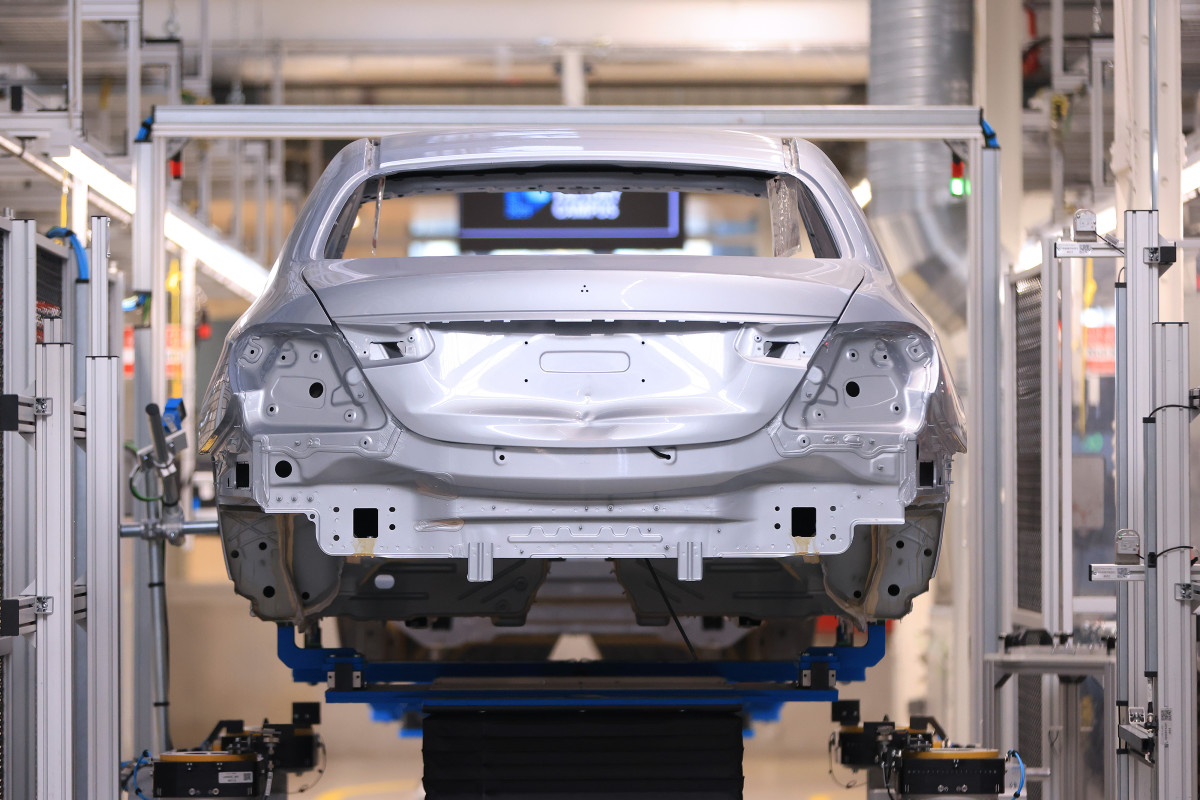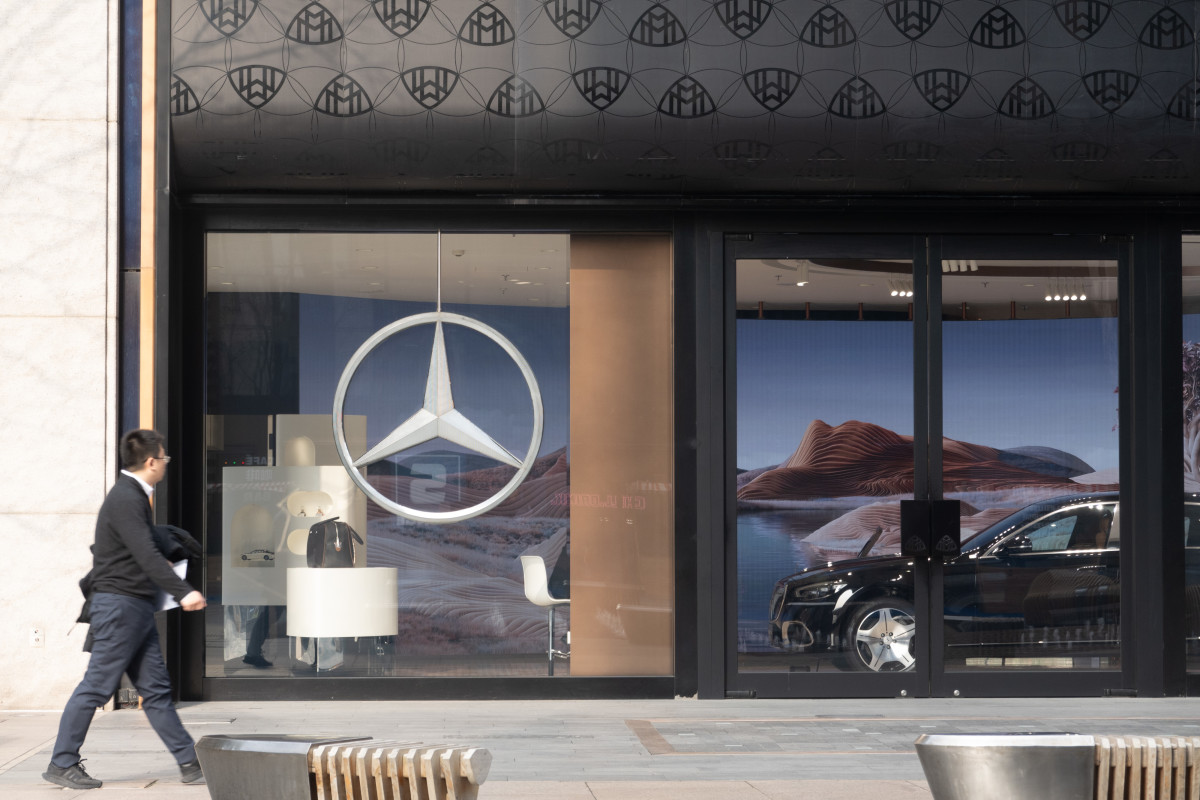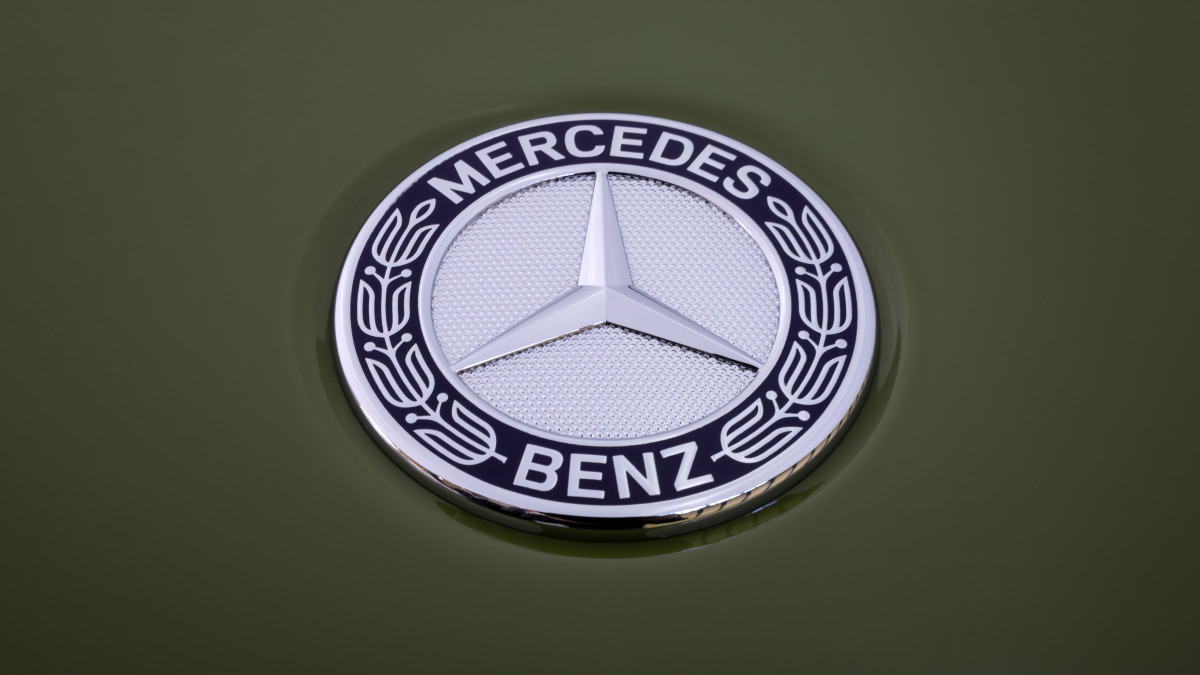Profit losses caused by tariffs are not a new trend
Early on April 30, German luxury automaker Mercedes-Benz posted its first-quarter results for 2025, announcing lower profit margins and sales led by its passenger car and van divisions amid uncertainty due to the tariff-led environment in which it now exists. Sales of Merc’s cars and vans dipped by 7% worldwide during the first quarter, with 10% declines in key markets like Europe and China, although sales were up by 1% in the United States.
As a result, Mercedes’s passenger car division reported a first-quarter profit margin of 7.3% in Q1 2025, slightly down from the 9% figure recorded at the same time a year before. Earnings before interest and taxes (EBIT) for the Mercedes Group took a heavy 41% year-over-year dip, taking home just 2.3 billion euros ($2.62 billion) in the first quarter of 2025.

Krisztian Bocsi/Bloomberg via Getty Images
Mercedes-Benz CEO: We have “levers” to combat tariffs
During the presentation of the company’s results, Mercedes-Benz CEO Ola Källenius and CFO Harald Wilhelm warned investors and analysts that the tariffs, at their current levels, will cost the company 300 basis points—or 3 percentage points—from its return on sales this year. This could cause already forecasted margins of 6 to 8% to dip to levels as low as 3%.
Wilhelm says the existing forecast already includes some tariff mitigation measures, including “pre-stocking” markets like the U.S. and China before tariff announcements; however, he and CEO Ola Källenius note that the effects of the tariffs, including consumer sentiment and sales, can cause the market to be unpredictable.
“It’s a dynamic environment that I haven’t seen in my 32 years with the company,” Källenius said. Wilhelm also warned that Mercedes is playing in an environment “so volatile that an accurate full-year guidance can’t be provided with a level of certainty.”
Källenius has had “constructive” talks with the Trump administration
During the announcement, Källenius mentioned that the automaker has been having discussions with the Trump administration, despite not going into greater detail with which officials or what the conversations have encompassed. However, he has described them as “constructive.”
Unlike rivals like Volkswagen-owned Porsche and Audi, Mercedes has a slight advantage alongside its Bavarian rival, BMW: a manufacturing presence in the continental United States. Mercedes-Benz has been making the GLE and GLS SUVs, and the electric EQE and EQS SUVs at its Tuscaloosa, Alabama, plant, which it also exports to other markets, including China, where retaliatory auto tariffs against the U.S. have reached over 100%.

Wang Gang/VCG via Getty Images
Despite this, the execs noted that it has stockpiled enough GLE and GLS models to “take [Mercedes] well into the second quarter,” adding that “later in the year, vehicles coming into China would be exposed to prohibitive levies of tariffs,” implying that GLE and GLS exports from the U.S. to China could stop if conditions make it prohibitive.
As for the United States, Källenius noted that the Alabama factory, which already makes many of its SUVs, as well as its ultra-luxury Maybach versions, has some extra capacity to absorb another one of its models. However, such an endeavor cannot be done overnight, as building a network of local suppliers to reduce dependence on imported parts can take some time. The CEO said that Mercedes is already measuring the feasibility of every component it doesn’t build in the U.S. to see if it can be localized. However, one component it cannot localize is the powertrain, as the existing European footprint has been developed over the span of a hundred years, and would be very expensive to relocate without careful planning.

Mercedes-Benz
Despite noting that more auto production localization is a “longer endeavor” that isn’t a “push-the-button exercise,” Källenius acknowledged that economic conditions are triggering a shift from global exporting to more regionalized and localized production.
“If we look to the longer future, three, four, five years, if the world goes more regional, we’ll prepare for that. We’re an export champion in all directions,” he said. “You don’t do these things overnight. It takes some years to get to the other side.”
Final thoughts
Despite the President unveiling a reimbursement program with his tariff announcement on April 29, it’s still unclear if it will do anything, especially since the core 25% penalty remains in place. But as Mercedes demonstrated, changing production patterns and reworking supply chains, let alone building or expanding a factory in the United States, requires a lot of time, math, and planning to work effectively; it’s not like flipping a light switch.